And Then Comes Christmas. Tom Brenner. Illustrated by Jana Christy. 2014. Candlewick Press. 32 pages. [Source: Review copy]
With some picture books, you almost have to read them a few times before you decide if you like them or not. Such is the case with Tom Brenner's And Then Comes Christmas.
And Then Comes Christmas is all about establishing atmosphere and celebrating traditions. Atmosphere is established by description and detail. Phrases like "bare branches rake across the sky" and "romp in snow as smooth as bedcovers." Traditions are celebrated: choosing a tree, decorating a tree, making cookies, wrapping presents, reading stories, attending programs, making crafts, seeing Santa at the mall, etc. Some traditions will likely be familiar. Some may not be. Not every child gets to play in the snow before Christmas--or after Christmas, for that matter! But all children could choose to make paper snowflakes to decorate their windows.
It is a book that slowly and gently counts down to Christmas. (Though not with actual numbers.) There is a certain pattern to it...multiple when/then passages.
I think my favorite when/then passage is:
When elves and reindeer appear in stores, and small trains race through toy villages, and piles of presents nestle in cotton drifts...Then hop from foot to foot, waiting to sit on Santa's knee."I like this one well enough. But I would hate to have to diagram any of these sentences!
How the Grinch Stole Christmas. Dr. Seuss. 1957. Random House. 64 pages. [Source: Review copy]
I love it. Of course I love it. How could I not? Now, I will admit that I didn't read the actual book until I was an adult. It wasn't one of the Seuss books that I owned growing up. But the christmas special--the cartoon--is one I've seen dozens and dozens of times. The book itself is lovely. If you love one, you'll love the other.
So in case you're unfamiliar with the book or special, The Grinch hates Christmas. His neighbors, the Whos in Who-ville, love Christmas. He is super-cranky this year, and, he decides to steal it. He thinks Christmas is all about the stuff. Take the stuff, do away with it altogether, right? Wrong. The Whos in Who-ville teach the Grinch a lesson about joy.
One of my favorite things about it is it's just SO quotable. Here are a few of my favorite lines:
Every who down in Who-ville liked Christmas a lot...But the Grinch, who lived just north of Who-ville, did NOT!
And THEN they'd do something he liked least of all! Every who down in Who-ville, the tall and the small, would stand close together, with Christmas bells ringing. They'd stand hand-in-hand. And the Whos would start singing. They'd sing! And they'd sing! AND they'd SING! SING! SING!
Then he slid down the chimney. A rather tight pinch. But, if Santa could do it, then so could the Grinch.
Then the last thing he took was the log for their fire! Then he went up the chimney, himself, the old liar.
It came without ribbons! It came without tags! It came without packages, boxes, or bags!"
'Twas the Night Before Christmas. Clement C. Moore. Illustrated by Jessie Willcox Smith. 1823/1912. HMH. 32 pages. [Source: Review copy]
I've read 'Twas the Night Before Christmas plenty of times before. But this is the first time I've read the edition of the poem published as a picture book in 1912 with illustrations by Jessie Willcox Smith.
The poem itself is as delightful as it ever is. I think this is a poem that feels familiar no matter what. You don't have to seek it out year after year. It just finds you and sticks. It's just part of the Christmas culture. (I love the Sesame Street play starring Bert and Ernie as featured in Muppet Family Christmas.)
It was interesting to see the illustrations from this time period. (You may see the illustrations at project gutenberg.) Did I love the illustrations? Not particularly.
The Nutcracker and the Mouse King. E.T.A. Hoffmann. Adapted by Wren Maysen. Illustrated by Gail de Marcken. 2009. 56 pages. [Source: Review copy]
I am not as familiar with the original story (1816) as I am the story of the ballet. (The two are different.) It's an odd book. I'll be honest. It is just as strange as Alice in Wonderland. (Though, of course, The Nutcracker and the Mouse King came decades before Alice.)
Marie Stahlbaum is the heroine of The Nutcracker and the Mouse King. The book opens with Marie and her brother, Fritz, playing together and waiting, waiting, waiting for all the delights of Christmas. They are waiting to enter the large drawing room where the tree is, and where the presents are. Their mother and father are there as well. As is Godfather Drosselmeier. There is a new doll, Clara, for Marie. There are new toy soldiers for Fritz. And there is a lovely toy castle, Marzipan Castle, for them both. The Nutcracker is a gift for the whole family. Marie does take special interest in it, this interest remains despite the fact that Fritz breaks the Nutcracker when he's showing off.
Marie stays up past her bedtime in the drawing room. This is when things get strange: seeing Godfather Drosselmeier on top of the clock, seeing all the mice attack, seeing the Mouse King, etc. She witnesses a battle. Towards the close of that battle, she throws a slipper at the wicked Mouse King.
Marie awakens in bed the next day. Her mother had found her bleeding on the floor near the tree and toy cupboard. She spends the next few days at least in bed. Spending so much time in bed might seem horrible, and, perhaps Marie found it to be so part of the time at least. But her Godfather tells her strange stories which she believes of course.
Plenty of The Nutcracker and the Mouse King is the Godfather's strange, strange story. This story is about "a king, a queen, some mice, and a young princess named Pirlipat." The story is rich in detail:
Princess Pirlipat was very lovely. She had flawless white skin, with bright blue eyes and flowing locks of golden hair. The generals, noblemen, and ministers of the state all told the king and queen that they had never seen a baby like the princess. Not only was the princess beautiful, but she was also born with two perfect rows of teeth!
The queen insisted that Princess Pirlipat's cradle always be guarded. The royal guards were placed at Pirlipat's door, and directly beside her cradle sat six nurses...and with these six nurses sat six big cats. The nurses had strict orders from the queen to keep one cat in each of their laps and pet them all day and all night so that they would never stop purring. This was indeed strange. No one knew why the queen went to such lengths to protect her princess, but still, every night, the sound of purring cats echoed throughout the castle. But the queen had a very good reason to be on guard, for a curse had been placed on her family.Readers learn of the family curse, of course. And it's something. The story becomes more and more bizarre as it unfolds. But to Marie, it is completely captivating.
Meanwhile, we have not seen the last of the mice or their dreadful King. Marie knows that sooner or later the final battle will come....
There does come a time when the Nutcracker takes Marie to his magical, fantastic home in Toyland.
So readers see Marie awaken again from yet another dream. Will Marie's ultimate dream come true?
This story is so strange and bizarre and rich in detail--pure fantasy.
The Velveteen Rabbit. Margery Williams. Illustrated by William Nicholson. 1922/2014. Random House. 48 pages. [Source: Review copy]
Do you know what it is to be real? One little Christmas bunny will learn this and plenty of other life lessons in Margery Williams' classic tale The Velveteen Rabbit.
The Velveteen Rabbit opens with a young boy receiving a rabbit for a Christmas present. All is lovely for the rabbit that first day. But the toy is quickly forgotten. He becomes one toy of many, many, many toys. He's not exactly special to the boy or the other toys. In fact, I'd say the other toys bully him a bit. All except for the Skin Horse, the oldest toy in the nursery. It is this horse that tells the Rabbit all about being real, what it takes to be real, what it feels like, how it changes you, etc.
"Real isn't how you are made," said the Skin Horse. "It's a thing that happens to you. When a child loves you for a long, long time, not just to play with, but REALLY loves you, then you become Real." "Does it hurt?" asked the Rabbit. "Sometimes," said the Skin Horse, for he was always truthful. "When you are Real you don't mind being hurt." "Does it happen all at once, like being wound up," he asked, "or bit by bit?" "It doesn't happen all at once," said the Skin Horse. "You become. It takes a long time. That's why it doesn't often happen to people who break easily, or have sharp edges, or who have to be carefully kept. Generally, by the time you are Real, most of your hair has been loved off, and your eyes drop out and you get loose in the joints and very shabby. But these things don't matter at all, because once you are Real you can't be ugly, except to people who don't understand." "I suppose you are real?" said the Rabbit. And then he wished he had not said it, for he thought the Skin Horse might be sensitive. But the Skin Horse only smiled. "The Boy's Uncle made me Real," he said. "That was a great many years ago; but once you are Real you can't become unreal again. It lasts for always." (5-8)The Velveteen Rabbit is one of my favorite Christmas books. I love the nursery magic. I love the ending. It was originally published in 1922. The story and illustrations in this edition are original. This is a beautiful edition of the book. One of the best I've seen.
The Velveteen Rabbit was published several years before A.A. Milne's Winnie the Pooh and House at Pooh Corner. Chances are if you enjoy one, you'll enjoy the other.
Do you have a favorite toy-come-to-life fantasy?
Fancy Nancy: Splendiferous Christmas. Jane O'Connor. Illustrated by Robin Preiss Glasser. 2009. HarperCollins. 32 pages. [Source: Library]
I enjoyed reading Fancy Nancy Splendiferous Christmas. This is actually the first Fancy Nancy book I've read, so it served as a good introduction to the series as well. I liked it very much. I love the illustrations. They were a bit busy, perhaps, but that is part of their charm, I think. I love the amount of detail. Every time I read it, I notice something I hadn't noticed before. There is something almost precious about this book--perhaps because of the illustrations, or even the text. But I don't mind that in a picture book now and then.
In this one, Fancy Nancy and her family are decorating the house for Christmas. They are doing plenty of christmas-y things all together as a family. One of things they are doing is waiting. Waiting is a big part of the holiday, in my opinion. They are waiting for the Grandpa to arrive. When he arrives, they can begin to decorate the tree. They always wait for him. And I imagine every year, she gets a bit impatient because she is oh-so-excited. This year, however, her parents allow her to put on the brand-new tree-topper, something that she picked out and bought with her own money--in the summer...I won't spoil this one. But I ended up liking it very much!
What Cats Want for Christmas. Kandy Radzinski. 2007. Sleeping Bear Press. 32 pages. [Source: Library]
For cat-lovers, this is a charming-enough book to read at Christmas time. The premise is simple: if cats could write letters to Santa, what would they ask for. Each spread shows a cat and his/her letter to Santa. The letters are all written in rhyme. The letters are predictable enough, but, the idea I think is original. I do wish there was more variety in what the letters requested, however. And some letters seem a bit dark and twisted.
I really liked the illustrations. I think I liked looking at the various cats better than reading the letters.
It's Not About You Mr. Santa Claus. Soraya Diase Coffelt. 2014. Morgan James Publishing. 34 pages. [Source: Review copy]
There are plenty of children who write letters to Santa each year. But how many letters to Santa include the gospel message? In this picture book a young boy does just that.
Dear Mr. Santa Claus,It's a simple book with a timeless message. Which timeless message? Well, I suppose I could pick one or two that stand out. First, that Christmas is not about Santa and presents and shopping. It is actually about celebrating Jesus. Second, that the gospel is too good to keep to yourself. The gospel is for sharing.
It's me again--a kid. I know I've written lots of letters to you before with long lists of gifts I wanted for Christmas. Well, not this year. This letter is different. I discovered the real meaning of Christmas has nothing to do with you at all. It is about a very special gift. I want to tell you about this gift. By the way, how are you and Mrs. Santa Claus doing? Have you lost any weight? Did your helpers, the elves, grow any taller? Do you still like cookies and milk? Are you still wearing that red, furry outfit? I've always wondered, what do you wear in the summer time?
The real Christmas story began a long time ago, when a Roman emperor named Caesar Augustus ordered that a census be taken. A census is when all the people had to be counted. At that time, A man named Joseph and his wife, Mary had to take a long journey to the city of David, known as Bethlehem, for the census. It wasn't an easy journey as Mary was going to have a baby soon.The focus of this book is on retelling the Christmas story and communicating the gospel message. Probably leanings toward more retelling.
I was pleasantly surprised by the illustrations. I thought they were very nicely done.
Will this book please every single reader? Probably not. It may not be a perfect fit for every family this holiday season. But I think for some it will be a great find.
© 2014 Becky Laney of Becky's Book Reviews




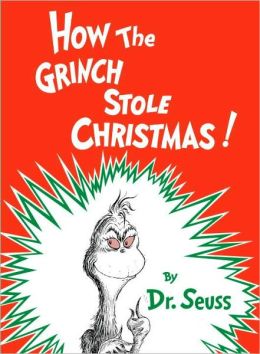

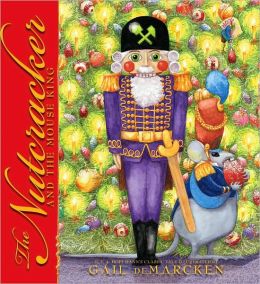
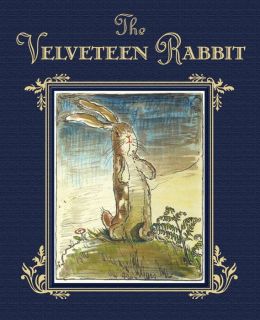



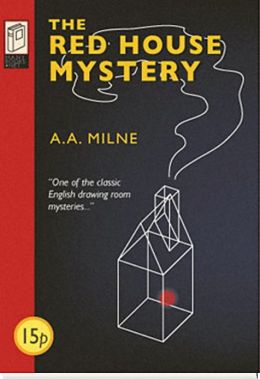
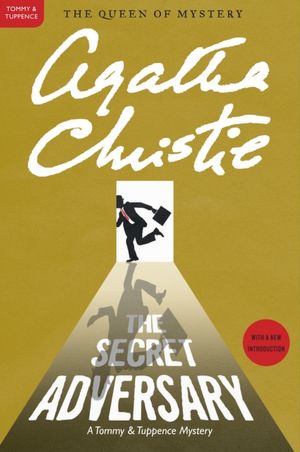

I love agatha christie! I should read her again. Thank you so much for reminding me and sharing this review. :D
D--ned with faint praise! I prefer Poirot and Miss Marple myself.
I tried so hard to like this one properly. But. There's just no comparing it with Christie's other works starring beloved detectives :)
I really love this Agatha Christie. This was her second book I believe. I like how it is not only a mystery book but also a spy novel. It is a cute read!
I'm another who loves Agatha Christie, but not Tommy and Tuppence. Give me Poirot and Marple!
Making the colorful bash is what that every occasion seeks, and no matter its a seasonal one or a personal one, you don’t need any excuse to insert flowers into your gifts. If Raipur is the gift sending address, or you are residing there, then RaipurFloristShop.comis the concern that you were looking for long. Make the trip to www.raipurfloristshop.com to all the exciting stuffs.
I've just finished reading my first Christie, a Poirot novel, Cat Among the Pigeons, and I liked it. By the sounds of your review and the comments perhaps I'll save Tommy and Tuppence for later.
I love Agatha Christie also. Never read Tommy and Tuppence. Thanks for the review!